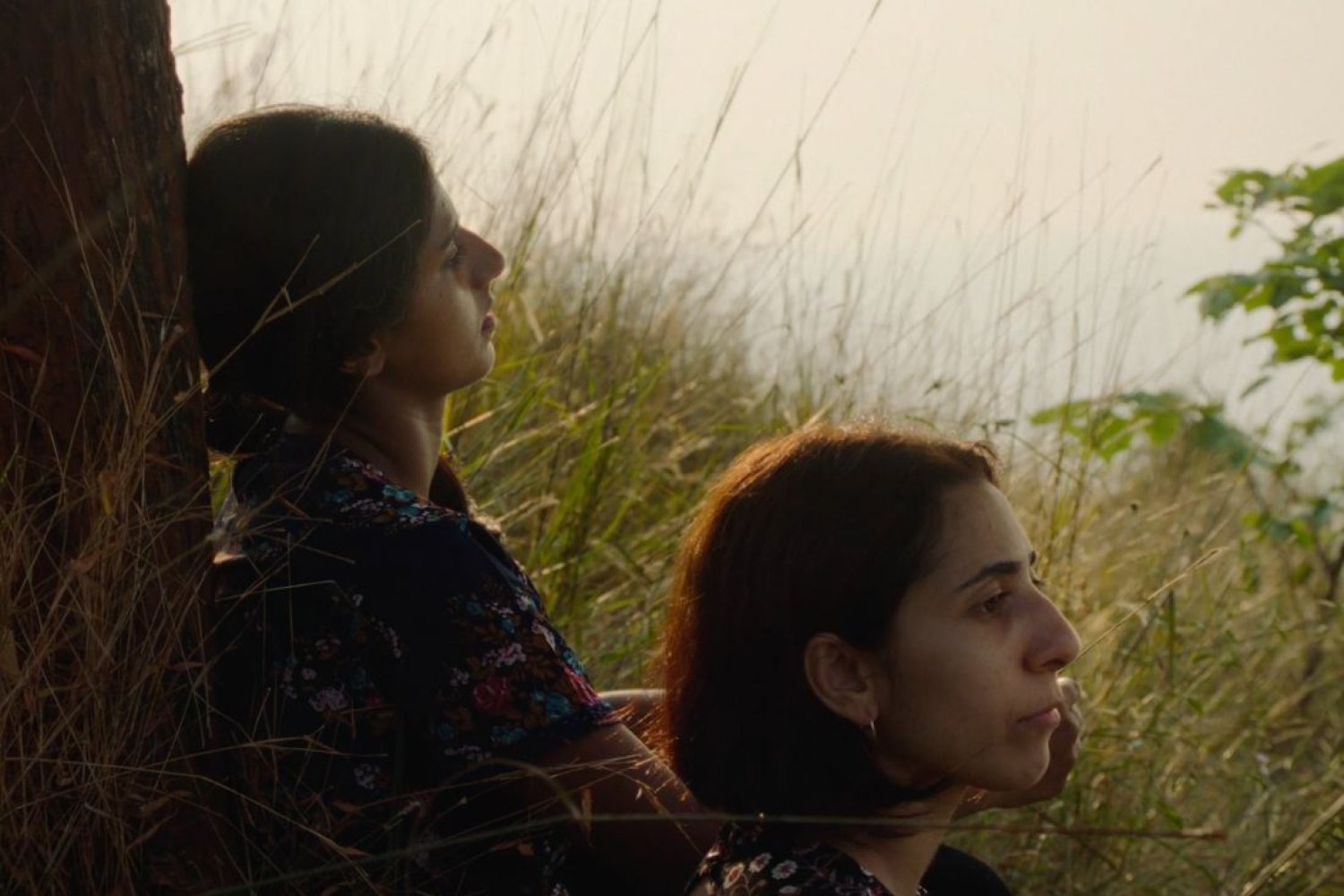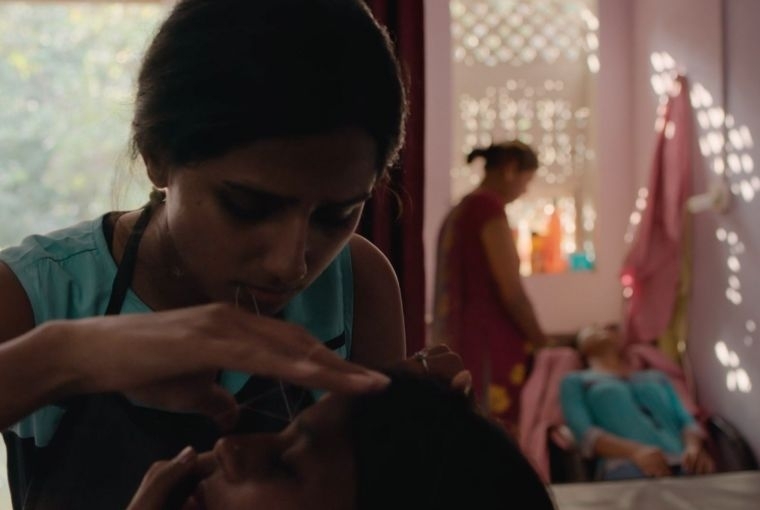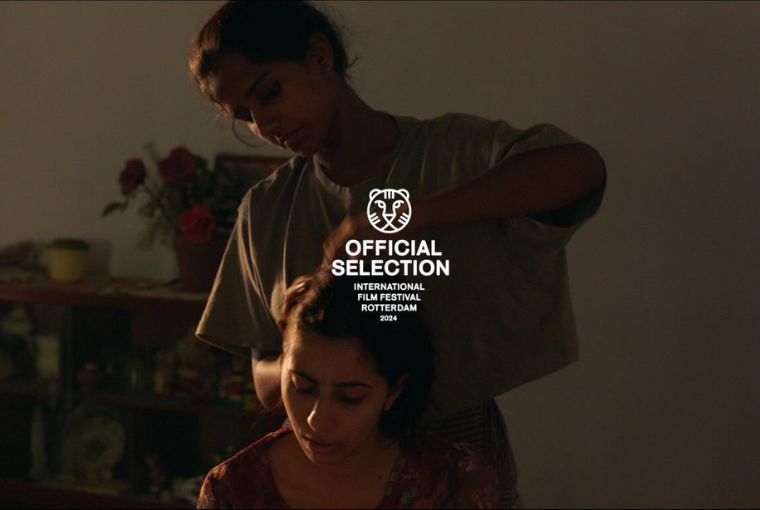

Where's Leela? remains a lingering question throughout the poignant short film, Leela, by Tanmay Chowdhary and Alina Gufran. However, rather than serving as the central focus, Leela's absence serves as a catalyst for deeper exploration. Spanning 14 minutes, the film delves into the lives of two other girls, offering a nuanced perspective on their friendship dynamics in the wake of Leela's disappearance, unraveling the complexities of female friendship. Against the backdrop of a small town and the aspiration of 'making it out of here,' it poignantly depicts how life persists and friendships transform amidst uncertainty and loss.
What influenced your decision to narrate the story of a missing girl through the perspectives of two other girls?
I wanted to use the device of the missing girl to delve deeper into the nature of Ila and Amala’s friendship, and how, while growing up, certain friendships existed due to a combination of proximity and circumstance. I remember, as a teenager, being highly attuned to the outside world, and at the same time, having the ability to tune in and out of it as if switching between channels on the radio. The disappearance of Leela becomes one such aberration in the course of the girls’ ordinary lives, a distraction from the persistent ennui and the feeling of being stuck. The film opens with a hint of the missing girl because she becomes a stand-in for many such stories in the village – of women choosing another life, moving on, leaving without an explanation or apology. The camera, in this case, brings in third-person scrutiny, almost as if the girls are being watched, even when they’re alone, which is a feeling we’re all familiar with. I wanted to make sure all these decisions can be subliminally felt in the experience of watching the film, even if they’re not made explicit. And, I wanted the viewer to feel the ‘break in the tedium’ the girls experience, along with the feeling of certain powerlessness. The disappearance became one such device to bring these multiple ideas together.
Could you elaborate on the concept of "making it out of here" as portrayed in the film?
Although I was writing about a place that I’ve recently come to live in, the resonance of female friendship, especially during the formative years, and the tension between wanting to stay in your hometown and the idea of leaving things behind for the potential and promise of a new start, are universal. I believe the desire to stay connected to where you belong is only closely surpassed by the desire to leave, but the baggage of movement and displacement can be immense. ‘Making it out of here’ becomes almost a poetic refrain, a pact, a sort of ultimate desire to “make it out of here.” The idea can be as fleeting as a lot of ideas teenagers are gripped by, but it can also weigh equally heavily in that moment. To Ila and Amala, leaving their village is also linked with, perhaps, leaving the friendship behind, which speaks to the last scene of the film.
The church is prominently featured throughout the film. What symbolic significance does it carry within the narrative?
The symbolism of the church works on multiple fronts – for one, it’s a fairly obvious indicator of the region where the film is set. This becomes especially significant because the film doesn’t have any other specific location markers. It’s also to connote the circularity, and passage of time– how something’s changed within the internal landscapes of the girls, but life goes on outside untouched. It also speaks to a certain alienation the girls feel from the community at large, especially when it’s condensed into very literal forms of a church congregation. That’s why you see the girls skipping mass and playing in the church compound. Personally, the idea of belonging is something I’ve continually contended with, and a lot of my writing is a way to address the tensions and contradictions present within that idea.

The mystery surrounding the character of Leela remains unresolved until the end of the film. What motivated this narrative choice?
I believe a story has to choose between two promises to fulfill– that of fulfilling the expectations of the watcher, and that of the character’s within the story itself. With Leela, I chose to make the ‘point of telling’ of the story as intimate as possible– that the climax of the story needed to serve the characters, and not the audience necessarily. Since Leela became a device to reveal the true nature of their relationship, concluding her disappearance in any particular way wasn’t key to understanding Ila and Amala, and how the disappearance impacts their friendship. It also becomes a narrative choice that’s reflective of life– that there are rarely ever neat conclusions presented, but life lingers and moves on irrespective.

What are some of the challenges of making a short film?
Short films, narratively, can often be a lot trickier than feature-length films. It’s easier to fall into tropes, rely on twist endings to please the audience, and tougher to manipulate time to establish characters. A lot of these factors influenced my decision to write Leela as more of an immersive mood piece than a narrative that follows the traditional three-act structure. I had a specific challenge since I originally wrote the script in English and worked with a Konkani theater teacher and writer, Prashanti Talpankar, and the actor who plays Amala, Sobita Kudtarkar, to translate the dialogues into Konkani. The dialogues were full of metaphors and subtext, so the translation had to reflect that. One of the biggest challenges was to nest the story within a culture and people that aren’t my lived experience. I don’t subscribe to the notion that writers should only write about what they’ve experienced, but inhabiting other worlds involves a certain sensitivity and lens that can be arrived at by determining the writer’s temporal relationship to the events in the story. Of course, most short films are made on shoestring budgets, so Tanmay (Chowdhary, the director) and Aastha (Singh, the producer) and I had to have the courage to make some difficult decisions, each decision being filtered through the lens of money. The aim is to fulfill that vision without getting attached to the idea of a bigger budget. That being said, I do not believe these challenges are unique to us.
Words Paridhi Badgotri
Date 17.03.2024